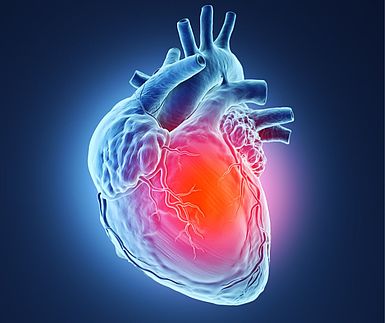Please type a search term (at least two characters)
News
World first in standardisation used for the diagnosis of heart conditions

EMPIR project consortium develops new radionuclide standard, for use in PET imaging, after undertaking epic journey
EMPIR project <link research-innovation search-research-projects details>‘Metrology for multi-modality of impaired tissue perfusion’ (15HLT05, PerfusImaging) is working to develop physical standards and data analysis tools to assess the reliability of new non-invasive medical imaging techniques for blood flow (perfusion) to the heart, thereby validating their potential use in the early diagnosis of cardiovascular disease.
The project consortium undertook a world first in November 2018 by standardising 15O (i.e. determining its absolute radioactivity), a positron emitting radionuclide used for the diagnosis of heart conditions, to allow the calibration of equipment and harmonisation of its use worldwide.
Consortium partners performed the standardisation at the Turku PET Centre in Finland, and were also able to perform a new half-life measurement at the same time.
Due to the very short half-life of the radionuclide of 122 seconds, staff from NPL in the UK had to transport sensitive primary counting equipment, along with a transfer instrument, to the site in Finland which involved 1,522 miles of driving, 1,508 nautical miles on a ferry and 62.8 miles under the channel on the Eurotunnel.
The standardisation was challenging due to the very short half-life and required a rethink of how several pieces of equipment collected and analysed data – these are valuable updates to the equipment and have improved NPL’s measurement capability. The successful standardisation and calibration of the transfer instrument allows the harmonisation of similar studies around the world to improve accuracy for this important diagnostic technique.
Andrew Fenwick from NPL said ‘This standardisation is a great example of how clinical sites and metrology institutions have to literally come together to solve a measurement challenge. The incredibly short half-life means that for every second that passes, almost 1% of the total radioactivity has decayed and therefore even things as simple as timing and synchronising measurements become critical to the final result. This led to a dynamic re-think of how we handle data in this scenario and many modifications to our usual processes were required in-situ. By working closely with those using measurement equipment on a daily basis we are able to deliver improvements directly to clinical practice, and ultimately patient outcomes. In my eyes, this is why places like this [NPL] exist and I hope such collaborations remain at the heart of nuclear medicine research at NPL.’
This EMPIR project is co-funded by the European Union's Horizon 2020 research and innovation programme and the EMPIR Participating States.
Want to hear more about EURAMET?
<link meta-menu subscribe-to-newsletter>Sign up for EURAMET newsletters and other information
Carbon dioxide, released from man-made activities, is lowering the pH of the Earth’s oceans, and impacting the health of marine organisms worldwide more
Supporting automated and reconfigurable manufacturing systems more
Working with external project Cool White to test and suggest improvements on the locally available white paints more
The project FutureEnergy has provided new calibration services for ultra-high voltages and a good practice guide on Lightning Impulse dividers more
For many of the 5000 photonics companies in Europe a precise knowledge of a material’s optical properties is vital for industrial competitiveness more





